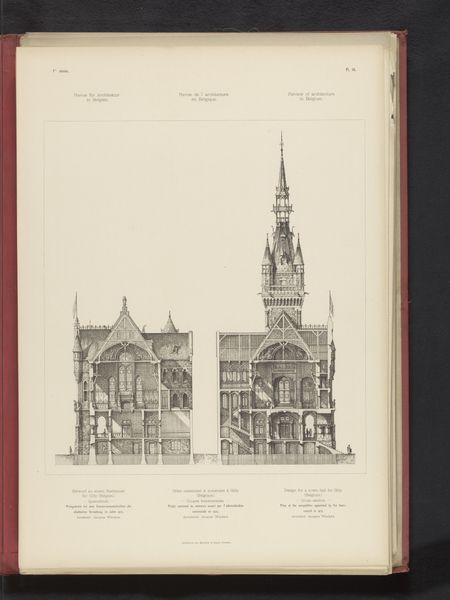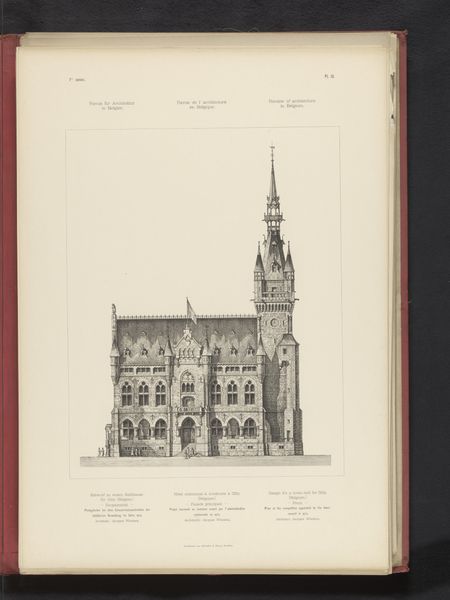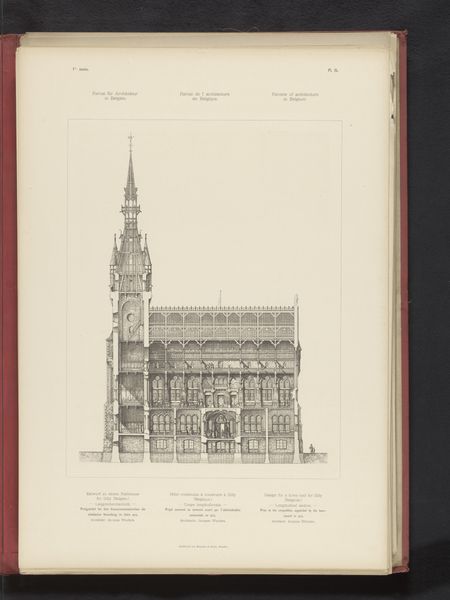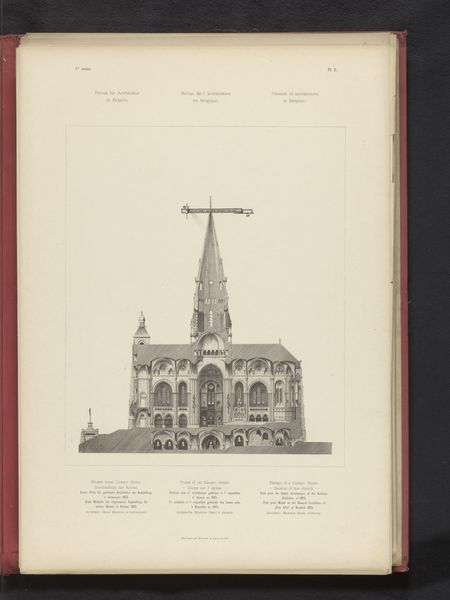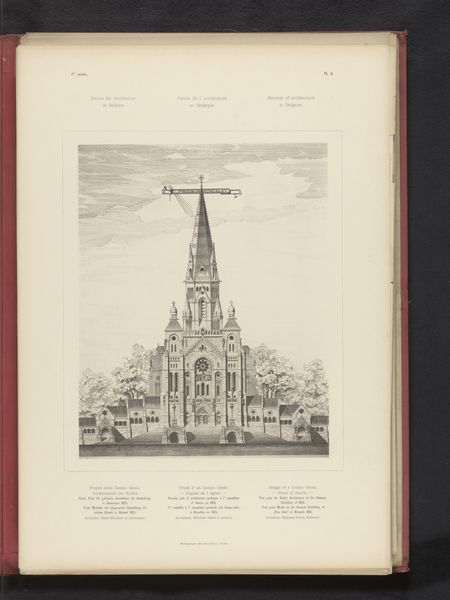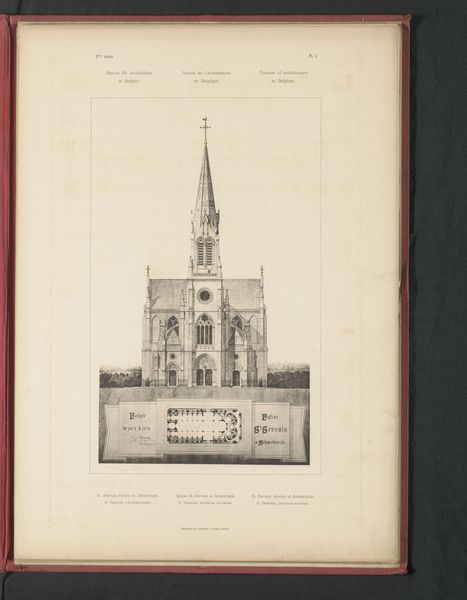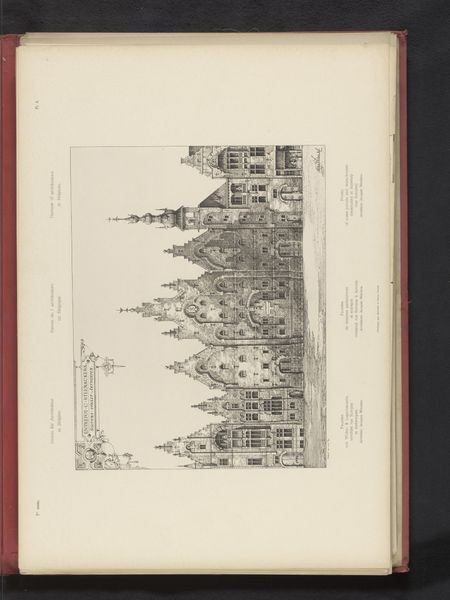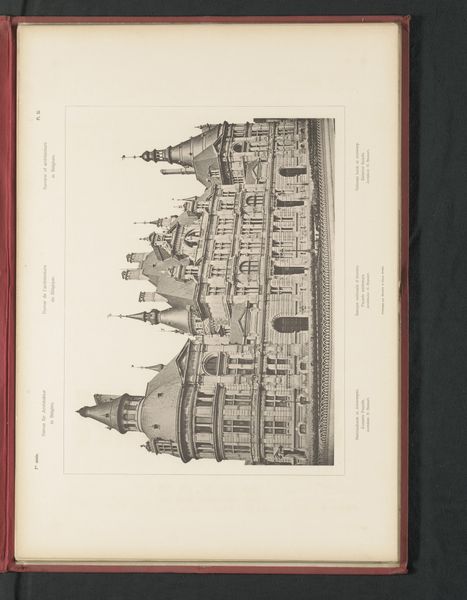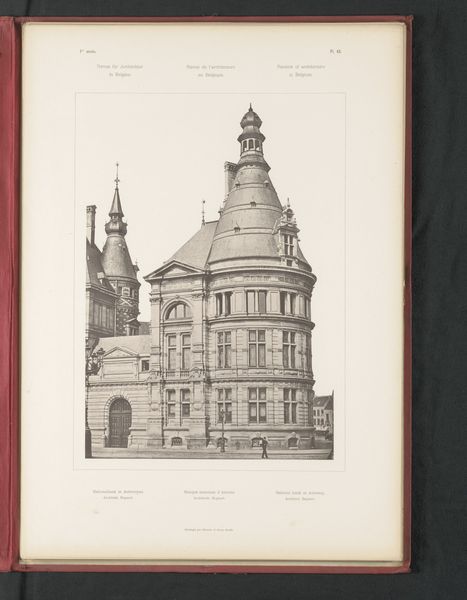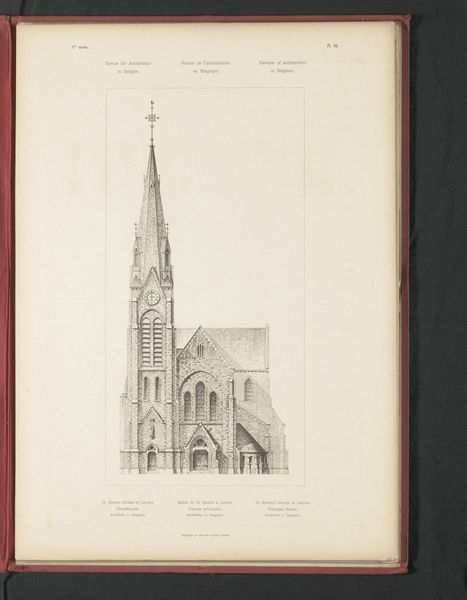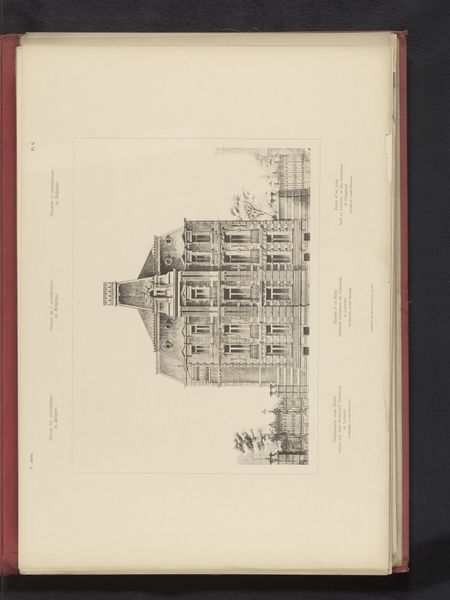
Reproductie van een ontwerp van een zijaanzicht van een stadhuis voor Gilly, België, door Jean-Jacques Winders before 1893
0:00
0:00
drawing, paper, ink, architecture
#
drawing
#
paper
#
ink
#
geometric
#
academic-art
#
architecture
Dimensions: height 340 mm, width 268 mm
Copyright: Rijks Museum: Open Domain
Editor: Here we have a drawing from before 1893 by Jean-Jacques Winders: "Reproductie van een ontwerp van een zijaanzicht van een stadhuis voor Gilly, België". It's rendered in ink on paper. The precision and detail are striking! What speaks to you most about this design, and perhaps more broadly, the medium of architectural drawing itself? Curator: What I find particularly compelling is how this meticulous ink drawing, seemingly so detached, actually speaks volumes about labor and material access. Think about the paper—its source, the industry behind its production. Ink, too—its composition, trade routes it might have traveled. Before architectural software, plans were created through human effort, thus exposing the means of making architecture. The building becomes a concept realized through drawing, so what part of this elevation captures your interest? Editor: I hadn’t considered the materiality of the drawing as it relates to the process. The towers grab my eye, how each façade differs and the labour intensive methods that create such varying patterns from this elevation. So is the material choice important here too, like ink as opposed to watercolour, which perhaps may not create as striking detail and precision for this work? Curator: Precisely. The permanence of ink signifies intention and finality, doesn't it? Look closer - this "reproductie," as it’s titled, suggests copies circulated. Now, think about *why*. Whose access was facilitated? The architect to share design concepts. But at the same time, mass production creates a social consumption where the audience can access information and become well versed, leading to public feedback which architects and governments have to consider when building state infrastructures such as this one. Would you agree that this architectural drawing is less an artistic pursuit and more a part of labour production that becomes circulated and available for consumption? Editor: Absolutely. The drawing as a tool. It shows that a beautiful end product can stem from such a pragmatic process. Thank you, this has opened my eyes! Curator: Likewise, seeing the relationship between the labour in this drawing with a clear intention behind distribution really exposes the nature behind a city's development.
Comments
No comments
Be the first to comment and join the conversation on the ultimate creative platform.
